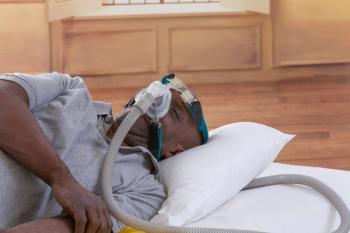
How Socioeconomic and Clinical Factors Influence Obesity Treatment
Key Takeaways
- Utilization of AOMs and MBS is low, with disparities based on race, education, and insurance coverage influencing treatment access.
- Insurance coverage significantly impacts treatment likelihood, with private insurance holders more likely to receive AOMs and MBS.
Research highlights disparities in anti-obesity medication use and metabolic and bariatric surgery.
Rates of
The study included more than 183,000 adults with obesity and found that only 6.6% received an AOM prescription between 2017 and 2023, and 1.8% underwent MBS despite being eligible. Utilization rates varied considerably based on demographic, socioeconomic, and clinical characteristics. The findings were published in
Low Treatment Uptake Despite Availability
Among patients eligible for AOMs, non-Hispanic White individuals had higher prescription rates (7.4%) compared with Hispanic participants (4.9%). Higher education levels and private insurance coverage were also associated with a greater likelihood of receiving prescriptions. For example, patients with a college degree had a prescription rate of 7.5% compared with 3.7% among those with less than a high school degree.
Use of MBS followed similar trends, with higher uptake among patients with more education, greater income, and private insurance coverage. Notably, patients with a body mass index (BMI) ≥ 45 kg/m² were far more likely to undergo MBS (4.6%) than those with a BMI between 35 and 40 kg/m² (0.7%).
Comorbidities influenced treatment likelihood as well. Patients with dyslipidemia or obstructive sleep apnea had higher odds of receiving both treatments, with MBS being strongly associated with dyslipidemia (aOR, 1.37; 95% CI, 1.14-1.65; P < .001) and obstructive sleep apnea (aOR, 3.29; 95% CI, 2.82-3.83; P < .001).
While AOM use did not differ across racial and ethnic groups in adjusted models, Black and Hispanic patients were more likely than White patients to undergo MBS. Hispanic patients in particular had the highest MBS rate (2.5%) compared with 1.7% for both White and Black patients.
The findings align with prior research showing disparities in uptake of evidence-based obesity treatments despite the availability of newer, more effective AOMs like semaglutide and tirzepatide—both
“Given the complex nature of barriers and facilitators of accessing these treatments and the dynamic nature of advances in treatments, timely and robust studies that would account for a wider range of clinical characteristics and social determinants of health are required,” the authors wrote.1
Overcoming Barriers
The study pointed to several reasons behind the low uptake of AOMs and MBS. Insurance-related barriers, such as restrictive coverage policies and lengthy preauthorization processes, were identified as major obstacles. Provider perceptions of obesity as a lifestyle issue, rather than a chronic disease, may further limit recommendations for treatment.
The authors also noted that patient-level factors like lack of awareness, fear of procedures, concerns about side effects, and high out-of-pocket costs play a role. Additionally, women were more likely than men to seek treatment, while older adults, younger adults, and retirees showed lower rates of treatment use, reflecting differences in health care engagement, social pressures, and financial resources.
Targeted awareness efforts may help increase treatment engagement, especially among men, while expanding insurance coverage and subsidizing costs could reduce disparities, according to the authors. They also noted the importance of supporting marginalized groups with limited access to healthy food or health coverage and emphasized preventive measures for those at lower obesity risk.
“While patients with severe obesity and related comorbidities are more likely to receive treatment, promoting awareness and preventive measures among those at lower obesity risk is crucial to preventing disease progression,” the researchers wrote. “Finally, integrating clinical decision support tools, such as clinical guidelines and diagnostic support systems, that personalize treatment recommendations may improve obesity treatment uptake.”
References
- Adekunle OA, Le P, Gupta DY, et al. Socio-demographic and clinical factors associated with the receipt of anti-obesity medication prescriptions and metabolic and bariatric surgery among eligible All of Us participants. Diabetes Obes Metab. 2025;27(9):4978-4988. doi:10.1111/dom.16544
- Klein HE. EASO recommends semaglutide, tirzepatide for first-line obesity therapy. AJMC®. October 3, 2025. Accessed October 3, 2025.
https://www.ajmc.com/view/easo-recommends-semaglutide-tirzepatide-for-first-line-obesity-therapy
Newsletter
Stay ahead of policy, cost, and value—subscribe to AJMC for expert insights at the intersection of clinical care and health economics.













































